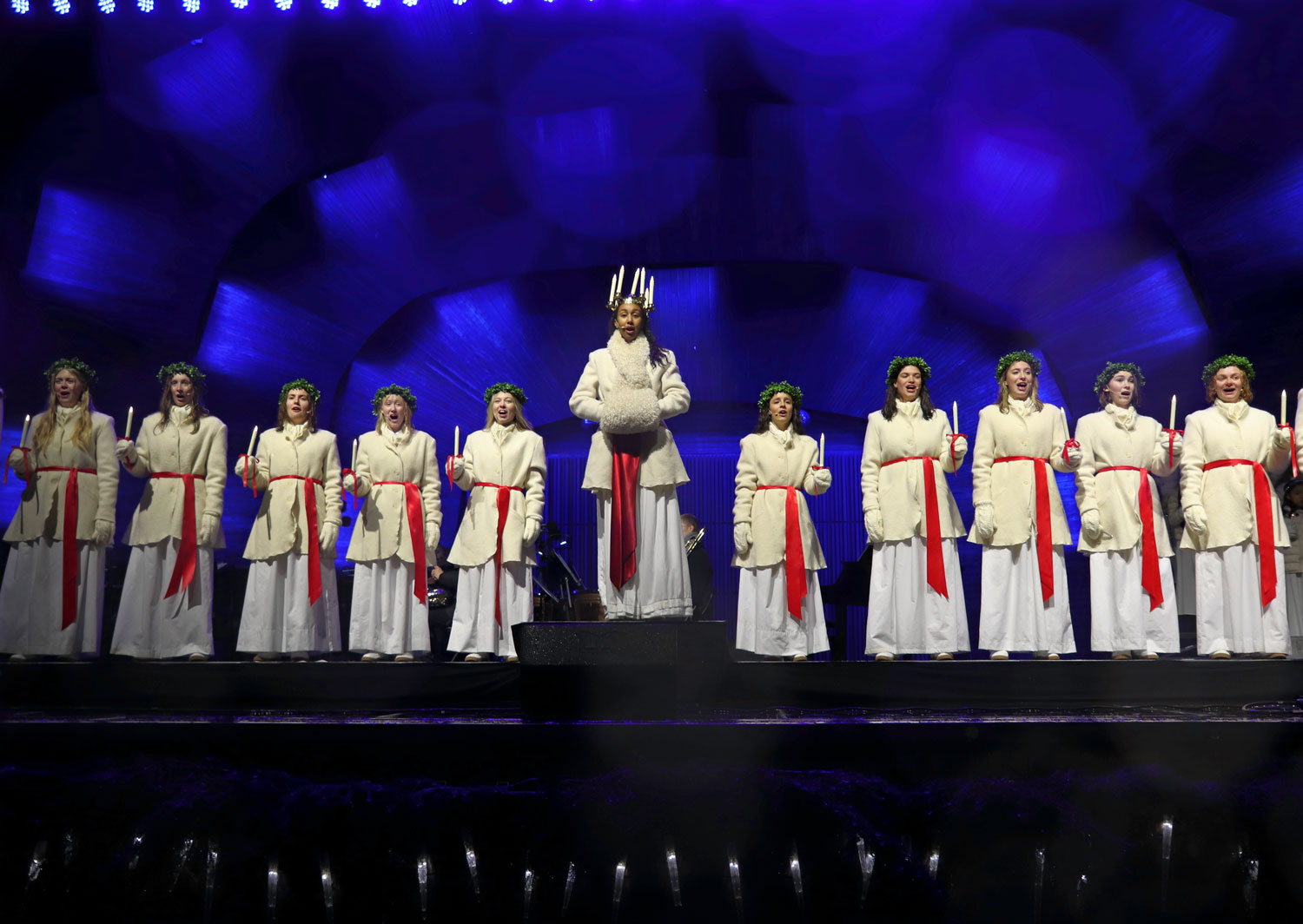- Startpage
- In English
- The Inventory
- Lucia processions
Lucia processions
Lucia is celebrated on 13 December in schools and pre-schools, in churches, in workplaces and hospitals as well as privately, primarily among families with children.
Location: Nation wide

Lucia is also celebrated by Swedish people who live abroad. The celebration is a relatively modern invention and has very vague connections to the Catholic Saint Lucia. It is considered to be modelled on a German tradition of dressing up, but there is also evidence of Lucia celebrations having taken place in Sweden as early as the 18th century.
Lucia celebrations can have a number of different forms but often involve songs and music and a Lucia procession. The tradition is currently very much alive, and it lives and changes along with those who practise it. In recent years it has been enriched with new characters in costumes, for example Christmas presents, that sing new songs. Someone or a group of people have to actively organise events and keep the tradition alive. The songs are often passed on through oral tradition but also through various printed texts and audiovisual media.
Early on, the celebration of Lucia became a symbol of a sense of regional and later also national community. It is also an example of how a tradition can be propagated universally under the influence of factors including the media. In 1893, Lucia celebrations were launched at the open-air museum Skansen; subsequently, the work done by voluntary organisations has continued to spread the tradition, which achieved wide circulation as a family tradition after 1960. In the latter part of the 20th century, Lucia celebrations have also spread to Norway and Denmark as well as to other parts of the world, through, for example, the efforts of various associations.
